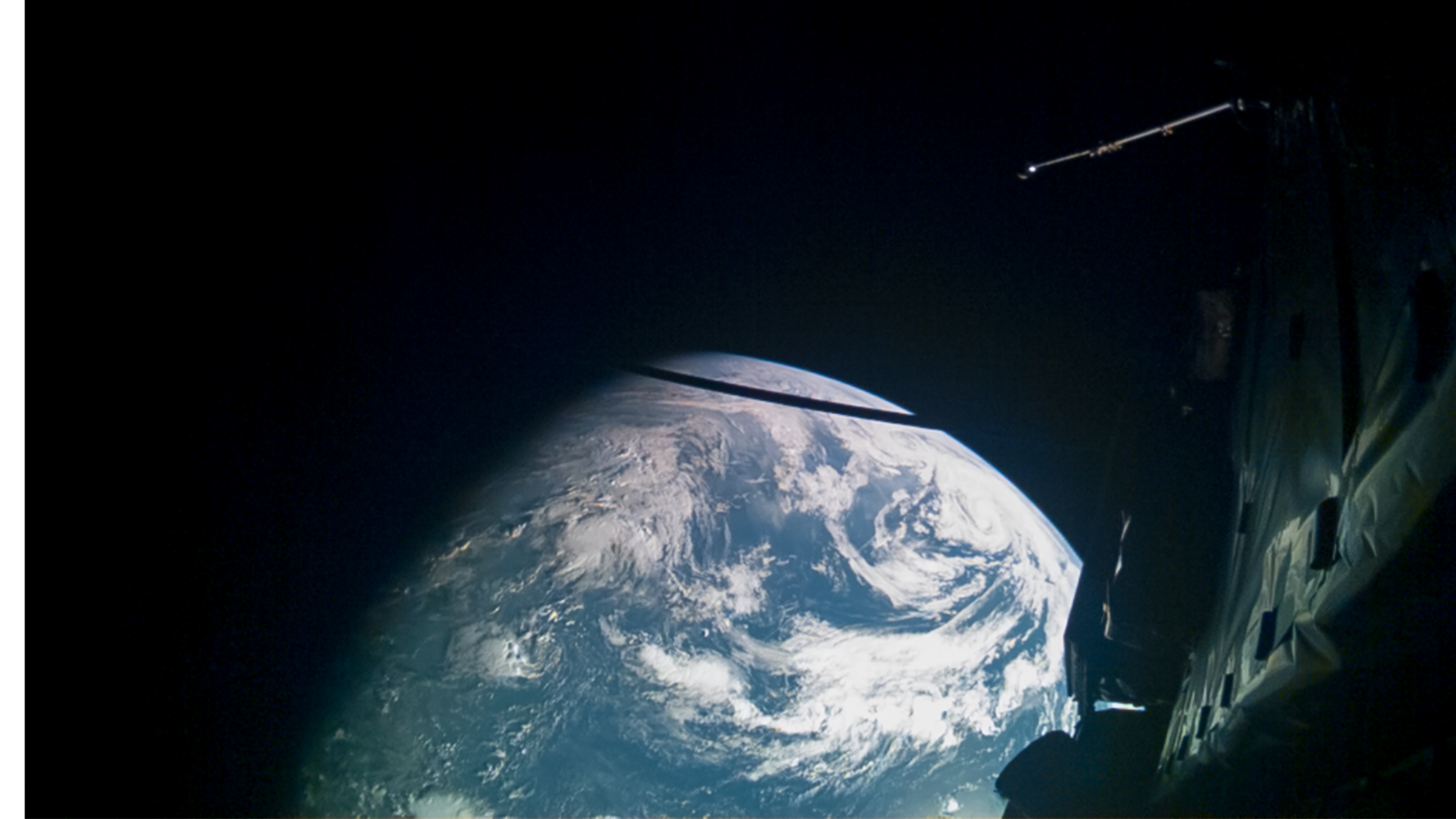ESA's JUICE spacecraft confirmed Earth is habitable. Here's why
Yes, you read that right. According to JUICE, the earth does indeed have the ingredients for life.

ESA's Jupiter Icy Moons Explorer (JUICE) is ultimately headed for the Jovian system, but on Aug. 20, it took a quick look at Earth. The spacecraft returned some very exciting news: the Earth is indeed habitable.
The probe launched in April 2023 and is currently making its way through the solar system on an eight-year journey to explore Jupiter and three of its moons Ganymede, Callisto and Europa, all of which are believed to have liquid-water oceans beneath their icy shells. During a flyby of Earth on Aug. 20, JUICE was able to successfully identify water in Earth's atmosphere, as well as carbon, hydrogen, nitrogen, oxygen, phosphorous, and sulfur (the "CHNOPS" elements, which are the most common elements in living organisms). And as such, scientists can confirm that there is the potential for life on Earth.
But, uh, don't we know that already? Yes — but the JUICE team had a good reason to run the tests anyway.
JUICE tested two of its instruments during its flyby of Earth, the Moons and Jupiter Imaging Spectrometer (MAJIS) and the Submillimeter Wave Instrument (SWI), which were able to detect the signs of habitability.
"We are obviously not surprised by these results … it would have been extremely concerning to find out that Earth was not habitable!" ESA JUICE project scientist Olivier Witasse said in a statement. "But they indicate that MAJIS and SWI will work very successfully at Jupiter, where they will help us investigate whether the icy moons could be potential habitats for past or present life."

When JUICE arrives at Jupiter, it'll perform the same tests on the planet's icy moons to determine if they could possibly support life. So performing a trial run on Earth, the only solar system body known to harbor life, is the best way to ensure the instruments are calibrated properly.
During its Earth flyby, JUICE also collected data about the composition of the atmosphere, including oxygen, ozone and carbon dioxide. Scientists plan to study the concentration of oxygen, in particular, as a point of comparison for the Jovian system — they will then be able to tell if the oxygen levels out there could support Earth's current biological activity.
Get the Space.com Newsletter
Breaking space news, the latest updates on rocket launches, skywatching events and more!
So while it might not be news that the Earth is habitable, JUICE's study of our planet is important in its own right. Now, on toward Jupiter!
Join our Space Forums to keep talking space on the latest missions, night sky and more! And if you have a news tip, correction or comment, let us know at: community@space.com.

Space.com contributing writer Stefanie Waldek is a self-taught space nerd and aviation geek who is passionate about all things spaceflight and astronomy. With a background in travel and design journalism, as well as a Bachelor of Arts degree from New York University, she specializes in the budding space tourism industry and Earth-based astrotourism. In her free time, you can find her watching rocket launches or looking up at the stars, wondering what is out there. Learn more about her work at www.stefaniewaldek.com.
-
Unclear Engineer I hope they also ran those tests on our Moon and found that it is not habitable. Checking for false positive is as important as checking for true positive, so there is nothing (less?) to quibble about when we get readings from Jupiter's moons.Reply -
perseverance Reply
Is the trajectory of the JUICE will pass the Moon?Unclear Engineer said:I hope they also ran those tests on our Moon and found that it is not habitable. Checking for false positive is as important as checking for true positive, so there is nothing (less?) to quibble about when we get readings from Jupiter's moons. -
Unclear Engineer Yes, see https://www.space.com/juice-jupiter-probe-earth-flyby-complete , which saysReply
"JUICE reached our moon for its lunar flyby at 6:15 pm EDT (2115 UTC) on Monday (Aug. 19); this rendezvous directed the ESA spacecraft toward Earth. It reached our planet just over 24 hours later, at 6:56 pm EDT (2156 UTC) on Tuesday (Aug. 20). Planetary and lunar flybys are key for JUICE's journey to Jupiter because the gravitational tides of these objects can help slingshot the spacecraft toward its final destination, allowing for trajectory changes with minimal fuel usage." -
Questioner One has to do primary, seeming redundant, seeming 'stupid' tests & experiments to validate correctness of methodologies & presumed facts.Reply
Entire consumer industries are built on single reported studies that no one can replicate.
Science journals don't like to publish replication studies because they aren't sensational.
Aberration is sensational and solid consistent confirmations are not.
Errors, fraud and confused logic are vastly more likely to become publicized headlines than solid reliable consistencies.
I say this as someone open to the possibility that some things may be inherently inconsistent.









